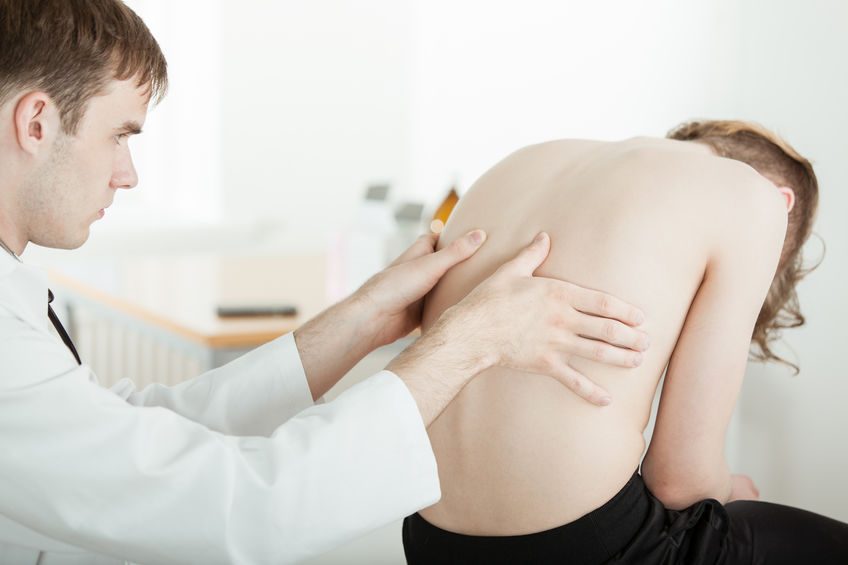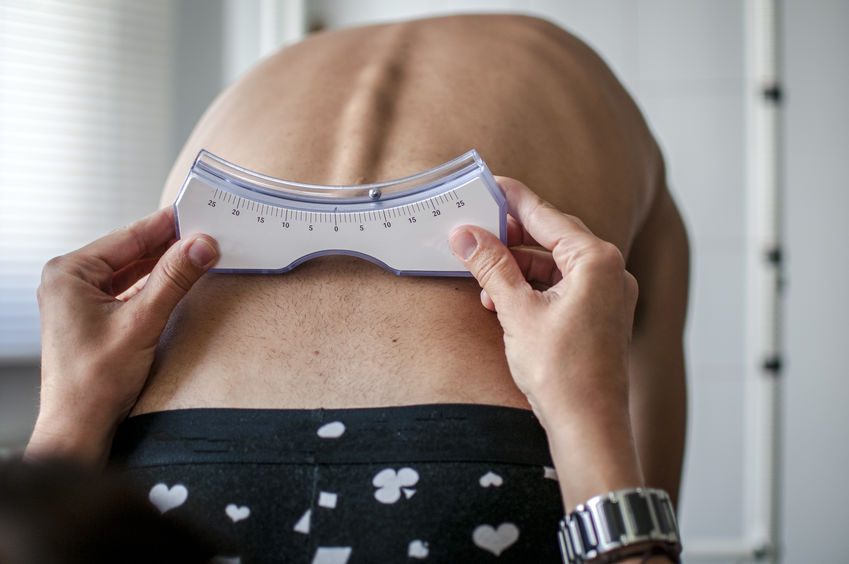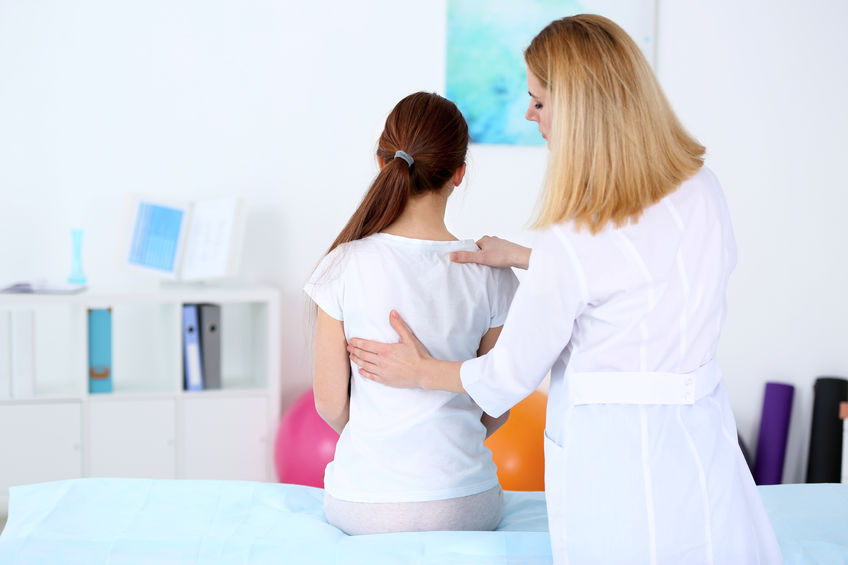How Do I Know I Have Scoliosis?
Hey, bud, can you scratch my back?” Those were the seven words that changed Jordan’s life, who was then in the ninth grade. “Something is funny about your back,” said, Kevin, a classmate of Jordan’s. Kevin innocently felt a curve on his back which seemed strange. It’s unusual to find out from another classmate that you possess Idiopathic scoliosis.

Adolescents may find out some way that they have Idiopathic scoliosis. It might be at a formal event or while they are attending a recreational activity where their back is exposed. Some are unsure of whom they should approach or simply just ignore it and will never get it checked out. Today we will discuss of how a ninth grader, Jordan was diagnosed with Idiopathic scoliosis.
Jordan’s doctor’s assessment included the following options
- Degree and extent of the curvature It’s severity and direct effect on Jordan
- Spinal skeletal maturity Is Jordan’s spine still growing?
- Where is the skeletal curve located? Is it lordotic curve or is it a kyphotic curve?
- Possibility of the curve progressing If Jordan’s curve was present prior to adolescence.
About three percent of the population today will develop scoliosis. According to The National Scoliosis Foundation, every year, about 600,000 scoliosis patients visit a doctor’s office to confirm some type of curvature of the spine. How would someone know that they are suffering from scoliosis if they do not ask assistance for a back itch like Jordan?
Three types of scoliosis curves
There are three main types of scoliosis, congenital (from birth), idiopathic (adolescent), and adult scoliosis. Adolescent idiopathic scoliosis appears during the adolescent growth spurt when the person is going through puberty, a time when children are growing rapidly (idiopathic is defined as having no identifiable cause). In many cases, the abnormal spinal curve is stable, although in some children the curve is progressive (meaning it becomes more severe over time). For unknown reasons, severe and progressive curves occur more frequently in girls than in boys. However, mild spinal curvature is equally common in girls and boys.
This article will concentrate on Idiopathic scoliosis which abounds when the patient is between ten and eighteen years of age. It is also called adolescent Idiopathic scoliosis (AIS). There are no proven causes for this condition, although research is looking for specific genes that could cause this condition, since there is a thirty- percent chance of recurrence in families that have it. This is because of a common genetic makeup that will create similar outcomes in two biologically related individuals. Generally, patients are healthy and have no previous medical history. Some experts claim that the cause can come from some type of muscle or hormonal imbalance.
There are no specific nerve or pain problems with AIS. The curvature does not put pressure on the organs such as the lungs as do the congenital and adult scoliosis issues. Yes, teenagers complain of back pain, however, this usually can be attributed to the large number of activities they are involved in ranging from sports to dancing depending on gender. Most teens suffering from back pain do not have good core abdominal and back strength, or flexibility of the hamstrings, except for those children involved in gymnastics. Those who are more flexible will also have the benefit of being spared of scoliosis.
My child has scoliosis now what?
One should not get nervous right away about treatment for AIS. The spine (sometimes called backbone), is made up of many vertebrae that are connected by cartilage (elastic tissue). This bone makeup will give a normal person the flexibility he needs for stretching, bending, balancing, and walking. If a person is suspected of having scoliosis, his spine will have a curve the shape of an S instead of being straight. Small curves do not usually cause problems. Experts use a scale of percentages to determine if the curvature is severe enough to warrant medical intervention. In many children with mild scoliosis, the spinal curve is mild enough not to require any treatment. If the doctor is concerned about the curve increasing, he or she may ask to examine the child every few months throughout their adolescence or until they stop growing.
What’s the difference between adolescent scoliosis & early onset scoliosis?
We must distinguish between adolescent scoliosis and early onset scoliosis. If scoliosis is present under the age of ten it is referred to as EOS (early onset scoliosis). This is because children under ten years of age are still growing at a greater pace than the ones after ten years of age. Early onset scoliosis can cause more problems than just a curvature to the spine. Lung development, malformed ribs and heart disease are dangerous complications that can develop with EOS. Children with EOS may not show any symptoms outwardly, especially if the curve is mild. A medical expert must look at the symmetry and contour of the waist, see if the head is tilted and check for uneven hips.

Pediatricians will sometimes use a screening test for grade school children called, Adam’s Forward Bend Test. The patient leans forward with his or her feet together at a 90-degree bend from the waist. The examiner will be able to detect any asymmetry of the trunk or any abnormal spinal curve. This is a simple non-invasive screening test that can detect potential problems without accurately determining the acuteness of the deformity. The same lab tests will be used for EOS and AIS, including but not necessary all, X-rays, CAT scans, and MRI’s.
Predominantly, by the time a child reaches the age of ten, spinal growth slows down. If at this point in their life there is a significant curvature, it can continue into adulthood. Some of the symptoms to look for, are uneven shoulders, leaning torso and in some cases rib protrusion, uneven leg measurements, the head not in line with the pelvis, and the rib cages at different heights on each side. The earlier the treatment is started the more likely it will be one hundred percent successful. The early stage of intervention is when the curve is 30 degrees or less. Here the success rate will be one hundred percent! The Cobb Method is used to diagnose the severity of the curve. Any curve of 10% and above requires medical intervention, from minor physical therapy, to brace therapy and only in very severe cases, surgery.

Curves between 30% and 49% will have a success rate of up to 92%. Curves of 50% or higher have a danger of a 50% success rate. Braces, especially the new types together with physical therapy will jump the success rate substantially. There are other new treatment options other than surgery that have come on the market recently. One of them is the WCR Brace, made by Dr. Jacques Cheneau of France and Dr. Emanuel Rigo of Barcelona, Spain. Each brace is custom designed according to each patient’s pressure and breathing points. One can correct the scoliosis by wearing the virtually unnoticeable brace.
There is a new option for teens with curvature of 25 % and above. It’s called, Scoliosis Boot Camp with rigorous habit changing routines. Identical twins, Matty and Violet were both diagnosed with AIS. Matty’s curvature rate was 37% and her sister Violet’s was 47%. Maddie’s diagnosis was bracing, and Violet’s was spinal fusion surgery. Their mother researched other options until she found a two-week scoliosis boot camp. They are so happy with the results after two weeks. Maddie’s curve decreased to 18% and Violet’s lessened to 15%.
The twins were required to buy sophisticated equipment to use at home with at least one-half hour of self-therapy every day for approximately two years. They are thrilled with the results and are starting high school surgery and brace free. A child, using this program, must be quite disciplined for such a self-therapy program to work. A visit and evaluation at an outpatient scoliosis therapy center can help you decide what kind of therapy is right for your child. Check if your child’s school has a scoliosis screening program. Screening for AIS is by no means routine. About half of the states currently prescribe school screening. The four leading scoliosis organizations are, Scoliosis Research Society, American Society of Orthopedic Surgeons, Pediatric Society of North America and American Pediatrics who provide support for school screening programs. Early identification will allow for easier non-surgical management and prevent further progression of any spine curvature. Please respect your child’s privacy and make sure the screening is done in a modest manner.
If your child is diagnosed with scoliosis, don’t panic. A curve is considered mild if it is less than 20 degrees. Between 25 and 40 degrees is still considered mild. A severe curve would be 50 or more degrees. There are so many wonderful options, other than surgery today. Be thankful that it happened in this millennium where new and improved options become available each year. Always be sure when researching online, that you check the year of the website’s information. There is so much new information coming out each day.


